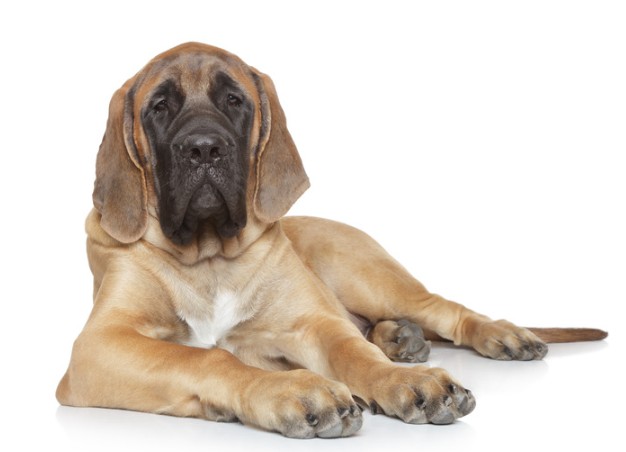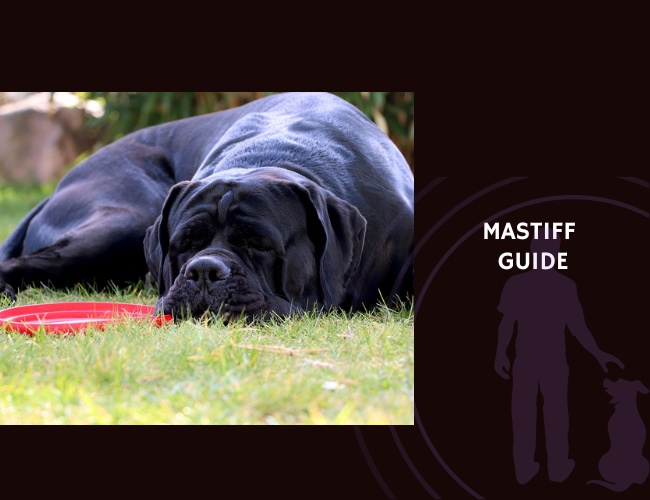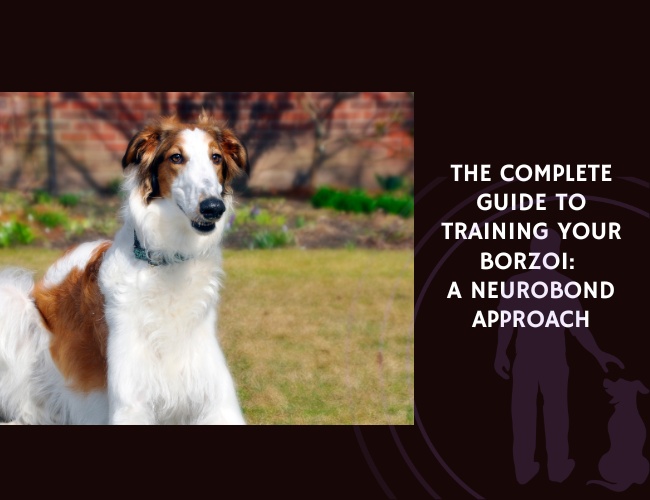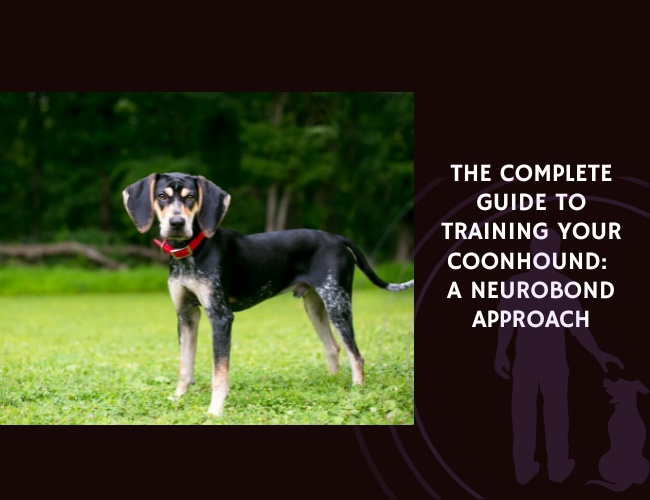Introduction to the Mastiff Breed
History and Origins
The Mastiff’s roots run deep into ancient history. Known for centuries as powerful guardians, Mastiffs have a lineage that likely started in the mountains and grasslands of Asia, before making their way to Europe. They were companions to warriors, protectors of livestock, and loyal estate watchers. Over generations, selective breeding for strength, loyalty, and a calm demeanor made Mastiffs excellent family guardians.
Their noble presence is not just myth. Mastiffs stood by their owners in both peace and conflict, becoming symbols of courage and gentleness. With time, their fierce loyalty and protective instincts were paired with a gentle nature, shaping the modern Mastiff we recognize today.
Physical Characteristics and Size
Mastiffs are unmistakably impressive in both size and stature. Adult males often reach 76cm or more at the shoulder, while females generally stand a bit shorter. Weight can range from 55kg to over 90kg—sometimes even more!
These dogs have a sturdy, muscular frame with a broad chest and substantial bone. Their coats are short and dense, usually found in shades like fawn, brindle, or apricot. The Mastiff’s large head, broad muzzle, and soulful eyes create an expression that’s both commanding and gentle.
Because of their size, Mastiffs require thoughtful care and space to thrive, especially during their puppy years when rapid growth places stress on joints and bones.
Reputation as a ‘Gentle Giant’
Despite their imposing exterior, Mastiffs are lovingly referred to as “gentle giants” by enthusiasts and families. This reputation is well-earned. Mastiffs show remarkable emotional stability, with a calm presence and low arousal reactivity. They can appear almost stoic, rarely overreacting to noise or strangers. Instead, their instinct is to quietly assess a situation, stepping in when needed, but never out of aggression.
Most Mastiffs are deeply attached to their families, relishing quiet companionship and offering steady loyalty. They may take their time to warm up to new friends, but their protective nature never includes unnecessary aggression. With proper socialization and care, Mastiffs become irreplaceable members of the family—devoted yet gentle, watchful yet affectionate.
As we become more familiar with the Mastiff, getting to know their special way of bonding with people is the next step to understanding what makes them exceptional companions.
Character and Temperament
Protective Instincts and Territorial Behaviors
Mastiffs are renowned for their deeply ingrained guarding instincts. This comes from a long history of working alongside people to protect property and livestock. Their protective temperament doesn’t typically translate into unnecessary aggression. Instead, Mastiffs rely on their confident presence and keen senses to assess situations before taking action. The balance between being watchful and relaxed is shaped by complex neurological and hormonal interactions, involving hormones like vasopressin and testosterone. These hormones play a role in both social bonding and territorial posturing, making the Mastiff an ideal watchful companion without frequent displays of hostility.
The “Gentle Giant” Phenomenon
Despite their imposing physical build, Mastiffs have earned the “gentle giant” nickname for a good reason. They show exceptional emotional stability and are not easily startled or provoked. This low arousal reactivity means that Mastiffs do not overreact to sudden noises, unexpected visitors, or changes in their environment. Their processing of sensory information is efficient, and they have a high threshold for the fight-or-flight response. When stress does occur, Mastiffs often recover quickly, returning to their typical calm demeanor. This desirable trait is influenced by genetics but can be strengthened through early socialization during puppyhood.
Social Bonding and Family Attachment
Mastiffs thrive on forming close bonds with their human families. They are affectionate and often seek physical proximity, making their loyalty clear in everyday life. Research suggests that measures like heart rate variability and the amount of time a Mastiff spends near their family could offer insight into the strength of this attachment. Mastiffs are happiest when included in the family dynamic and may develop stress behaviors if isolated for long periods. The breed’s tendency toward protective, yet affectionate, posturing helps shape a sense of security for children and adults alike.
Mastiffs are unique in their blend of guardian instincts and steady affection. Their temperament lays a strong foundation for effective training and a harmonious living environment.
Training and Education
Mastiff Learning Style
Training a Mastiff is not like teaching a Border Collie or a Labrador. Mastiffs have their own unique approach to learning. They tend to show a longer learning latency, meaning it can take a bit more time for them to catch on to new commands. Consistency and patience are essential. Repetition helps your Mastiff understand what is expected. Keep training sessions short—no more than 10–15 minutes at a time. Always aim for positive experiences, as harsh corrections can damage trust and slow learning. Training early and keeping the process upbeat sets the foundation for a well-mannered dog.
Motivational Strategies
Mastiffs are not naturally high-energy or hyper dogs. This means you need to get creative to keep them engaged during training. Food rewards often work well, but consider varying treats so they don’t lose interest. Gentle praise and petting can reinforce your bond. Don’t forget about verbal encouragement—a cheerful, upbeat “good dog!” goes a long way.
Some Mastiffs love a favorite toy as a reward, though many prefer quieter forms of appreciation. The key is noticing what makes your individual dog light up and using that as a motivator. Also, the timing of your rewards matters. Offer treats or praise immediately after the desired behavior, so your Mastiff understands what action earned the reward.

Navigating Adolescent Challenges
Like teenagers, adolescent Mastiffs can become a bit stubborn. This developmental phase might introduce testing boundaries, selective hearing, or even regression with previously learned commands. Stay calm! Use consistent routines and keep communicating your expectations with kindness and clarity. Incorporate training into daily life—ask for a sit before meals or a down before opening the door for a walk.
Remember, adolescence is temporary. Avoid confrontations or harsh responses. Instead, channel their energy into simple, positive sessions. By managing this stage with patience and consistency, you’ll forge a lifelong relationship built on trust and respect.
As you and your Mastiff master essential commands and navigate growing pains, you’ll be better prepared for supporting their long-term well-being.
Nutritional Requirements
Controlled Growth and Skeletal Development
Ensuring proper growth in Mastiffs starts with their food. Growing too quickly can cause skeletal issues, while slow, monitored growth is ideal. For puppies, it’s important to follow feeding guidelines that set up the right balance of calcium and phosphorus. These nutrients help bones form correctly. Too much or too little can increase the risk of hip and elbow dysplasia during the early months. Mastiffs benefit from a high-quality, protein-rich diet, but avoid letting them eat free-choice, as overfeeding encourages rapid weight gain and joint stress.
Puppies should eat portioned meals two to three times daily. Keep a steady routine and monitor their weight through regular veterinary checks. If you’re unsure about portion sizes, your vet can recommend the right amount for your growing dog.
Weight Management for a Slower Metabolism
Mastiffs have slower metabolisms compared to many dog breeds. They tend to gain weight easily, so portion control is critical. Adult Mastiffs usually need between 4-6 cups of dry food, divided into two meals per day. Keep an eye on their activity level and adjust intake to prevent obesity. Having food out all day invites overeating. Instead, stick to regular meal times and use a measuring cup to avoid guessing.
Keep treats healthy and limited. Use low-calorie snacks like carrots, green beans, or small pieces of cooked chicken when rewarding your pet. Regular weigh-ins at home or during vet visits also ensure your Mastiff is staying on track.
Joint Support and Micronutrient Optimization
Joint health is a lifetime priority for Mastiffs. Supplements such as glucosamine, chondroitin, MSM, and omega-3 fatty acids help protect joints and may reduce inflammation over time. These are especially handy for active or aging dogs. Always talk to a vet before adding supplements to your dog’s diet.
Don’t overlook essential micronutrients. Zinc, vitamin E, and selenium support immune and coat health for Mastiffs. Complete, balanced foods for large breeds usually cover these needs, but it’s smart to review labels when choosing a formula.
A thoughtful approach to nutrition can set the foundation for a long, comfortable life for your Mastiff. Consistency, good habits, and a little expert help keep your gentle giant healthy and happy for years to come.
Massive. Mellow. Mindful.
Big doesn’t mean brash.
The Mastiff may tower in size, but their soul is composed of restraint and quiet confidence. They watch, not rush. They listen, not bark. Unlike many breeds, their strength comes not from muscle alone, but from a remarkable ability to remain calm under pressure.
Emotion in slow motion.
A Mastiff processes the world at a different tempo—steady, deliberate, deeply bonded. Their loyalty isn’t loud; it’s constant. They don’t need to be the center of attention to hold the room. Once they’ve claimed your trust, it’s permanent.



Care over command.
Training a Mastiff is never about dominance—it’s about mutual understanding. Push too hard and you lose them. Guide with patience and their quiet genius shines. In their world, clarity beats control, and connection outlasts compliance.
Common Health Concerns
Hip and Elbow Dysplasia: Prevention and Management
Mastiffs are known for their impressive size and strength, but these traits also make them vulnerable to joint problems. Hip and elbow dysplasia are common hereditary issues in giant breeds. These conditions develop when joints don’t form properly, leading to pain and mobility challenges later in life.
Prevention starts with choosing puppies from reputable breeders who test for these conditions. Support your Mastiff’s skeletal health with a carefully managed diet, especially during the early growth stage. Avoid overfeeding and provide low-impact exercise, such as swimming or gentle walks. Early detection is key—if your Mastiff begins to limp or shows signs of discomfort, see your veterinarian for proper diagnosis and management. Supplements like glucosamine and chondroitin may help maintain joint health for some dogs.
Cardiac Issues Including Dilated Cardiomyopathy
Large breeds like Mastiffs can experience heart problems, including dilated cardiomyopathy (DCM). DCM means the heart’s muscles become weak and enlarged, making it hard to pump blood. This can lead to symptoms such as fatigue, coughing, or difficulty breathing.
Routine veterinary visits are crucial for heart health. Some vets recommend echocardiograms or ECG screenings, particularly as your Mastiff ages. Early intervention with medication and lifestyle adjustments can improve quality of life. Monitoring for subtle changes, like reduced energy, helps catch issues early.
Gastric Dilatation-Volvulus (Bloat): Risks and Prevention
Bloat, also known as gastric dilatation-volvulus (GDV), is a life-threatening emergency in giant breeds. Bloat happens when the stomach fills with gas and twists, cutting off blood flow. Rapid intervention is required and can be lifesaving.
To lower the risk of bloat:
- Feed smaller meals several times a day instead of one large meal.
- Avoid vigorous exercise immediately after eating.
- Use slow-feeder bowls to prevent gulping air while eating.
- Discuss surgical prevention options (such as gastropexy) with your veterinarian.
Staying aware of your Mastiff’s health needs sets the stage for a happy life together. Up next, we’ll explore creating home environments that allow your Mastiff to thrive.
Living with a Mastiff
Creating an Ideal Home Environment
Bringing a Mastiff into your home means planning for both comfort and practicality. Due to their giant size, Mastiffs need more room than smaller breeds for daily movement. While some adapt to living in apartments, they thrive best in spaces that allow them to stretch out and move about freely.
Keep in mind: a Mastiff’s wagging tail can clear off coffee tables, so decluttering floor spaces and securing fragile items is a must. Soft, supportive bedding is important for their joints, especially since they can be prone to issues like hip and elbow dysplasia. Ensure that food and water bowls are at a comfortable height to reduce strain on their neck and shoulders.
Exercise and Activity Needs
Despite their size, Mastiffs are not high-energy dogs. Their daily exercise requirements are quite manageable but should be tailored to protect their joints.
Low-impact activities work best, including:
- Short walks on soft surfaces
- Swimming sessions, if available
- Gentle playtime in a secure yard
Avoid high-impact activities like jumping, running on hard surfaces, or excessive roughhousing, especially in puppies and aging adults. Over-exercise can put too much pressure on joints and increase injury risk. Regular, gentle movement helps manage their weight and keeps their muscles strong without overstressing their bodies.
Family Interactions and Social Life
Mastiffs are true family companions, known for their affectionate and protective nature. They develop strong attachments and often seek closeness with their people. With proper socialization and supervision, Mastiffs can be excellent with children. Their calm demeanor makes them steady companions, but their sheer size means interactions with young kids should be closely supervised.
Introduce other pets gradually. Mastiffs can coexist peacefully with other animals, but early, positive socialization is key to nurturing their gentle side. Encourage good manners and positive associations to help your Mastiff become a considerate family member.
Adapting your lifestyle to meet the Mastiff’s unique needs helps foster a happy, healthy life together.

Environmental Adaptations
Temperature Sensitivity and Seasonal Needs
Mastiffs are sensitive to temperature extremes. Their large size, dense coat, and short muzzle make them less efficient at cooling down. In warm weather, they can overheat quickly. Always provide access to shade and plenty of fresh water. Avoid walking your Mastiff during the hottest parts of the day—early morning or evening is best. Signs of overheating can include heavy panting, drooling, and lethargy. In the winter months, Mastiffs usually tolerate cold better but should not be exposed to freezing temperatures for long periods. Short walks in cooler hours are fine, but always dry your Mastiff thoroughly if they get wet to prevent chills.
Creating Comfortable Spaces for a Giant Breed
Providing a cozy and safe space is essential for your Mastiff’s well-being. Their joints need extra care, so give them a bed with thick padding. Orthopedic dog beds are excellent choices to reduce joint pressure. Make sure doorways, halls, and resting spots can handle their imposing size—clear pathways of clutter and fragile items.
Consider these tips for a comfortable Mastiff home:
- Use non-slip mats to help prevent injury on slippery floors.
- Offer quiet areas for downtime, away from household hustle.
- Ensure bowls and beds are at a comfortable height to minimize strain.
- Regularly clean bedding to reduce allergens and keep their coat healthy.
Adapting to Urban and Rural Environments
Mastiffs adjust to both city and country life when their needs are met. In apartments or small city homes, space can be tight. Focus on providing short, frequent walks and mental stimulation through interactive toys. Be mindful that stairs can add joint stress, so minimize stair use if possible.
For rural living, secure your Mastiff in a fenced yard. Supervise outdoor time, as Mastiffs can be protective of their space. The peace and quiet of rural settings often match their calm nature, but they still need human companionship and supervision.
Thoughtful adaptations let Mastiffs thrive, no matter the environment, giving your gentle giant the safety and comfort they deserve.
Senior Care and Aging
Age-Related Health Changes
As Mastiffs enter their senior years, their bodies undergo noticeable shifts. One of the first signs is a slowdown in energy and endurance. You might see your Mastiff napping more, moving slower, or hesitating with stairs and furniture. Joint discomfort, especially from conditions like hip or elbow dysplasia, often becomes more pronounced, leading to stiffness after rest or reluctance to exercise.
Weight management also gets trickier as their metabolism slows. Extra pounds put added strain on joints, increasing the risk of mobility issues and discomfort. Keeping your senior Mastiff at a healthy weight with portion control and carefully selected, nutritious food is essential. Regular veterinary checkups help track changes in weight, muscle tone, and any new aches or pains that could impact quality of life.
Mobility Support for Aging Giants
Mobility support is crucial for aging Mastiffs. Gentle, low-impact exercise like slow walks or swimming can help keep muscles strong without over-stressing joints. Investing in thick, orthopedic bedding gives their joints relief while resting. Non-slip rugs or mats placed on slippery floors help prevent falls and make it easier for them to get up and move around.
Support harnesses or ramps are helpful tools for getting in and out of vehicles or climbing short stairs. For more advanced joint discomfort, your veterinarian may recommend joint supplements such as glucosamine or chondroitin to ease discomfort and support movement.
Supporting Cognitive Health and Quality of Life
Cognitive changes, including confusion or increased anxiety, can occur in older Mastiffs. Keeping the routine predictable and the environment safe is key. Simple puzzle toys or gentle games help maintain mental stimulation. Positive interaction, touch, and calm reassurance offer comfort and reinforce the strong bond Mastiffs have with their families.
Regular health checks and proactive pain management ensure your Mastiff remains comfortable and happy. With attentive care, aging Mastiffs can continue to thrive as beloved members of the family, enjoying a good quality of life in their golden years.
Looking after a senior Mastiff is a rewarding journey, full of gentle moments and quiet companionship. 🐾
Is a Mastiff Right for You?
Lifestyle Compatibility Assessment
Before bringing a Mastiff into your life, it’s important to reflect on your lifestyle and space. These gentle giants adapt well to various situations, but they do need enough room for daily movement. Smaller homes or apartments can work if large furniture or clutter is minimized, but Mastiffs must have safe pathways and cozy resting spots.
Keep in mind, Mastiffs value close family connections and don’t do well with long hours left alone. If your schedule requires frequent travel or extended workdays, it may not be the ideal match. These dogs thrive in routines, so a stable environment with calm, consistent schedules is best.
Financial Considerations
Owning a Mastiff is a heartfelt commitment—and also a financial one. Due to their substantial size, expect higher costs in several areas:
- Food: Giant breeds consume much more than an average dog, meaning monthly bills for high-quality food often total $100–$200.
- Healthcare: Veterinary care is crucial as Mastiffs are prone to joint issues, heart conditions, and bloat. Budget for routine check-ups and be prepared for unexpected treatments, sometimes costing several thousand dollars.
- Supplies: Everything from beds and collars to crates must be extra-large and sturdy. These usually come with a higher price tag compared to standard dog products.
Pet insurance can help offset costs, but always plan ahead for emergencies.
Time Commitment and Long-Term Planning
Mastiffs require daily care, companionship, and gentle exercise. Their slow maturation means puppyhood and adolescence can last longer, with plenty of patience needed throughout. Regular grooming and environmental adjustments help them remain comfortable as they grow.
These dogs form strong bonds and will be part of your life for years—often 6–10 years or more. Factoring in aging challenges and potential health changes is key for responsible ownership.
With thoughtful planning and realistic expectations, a Mastiff can bring immense loyalty and comfort to your household. The next step is considering how to create a welcoming environment for your new gentle companion.










